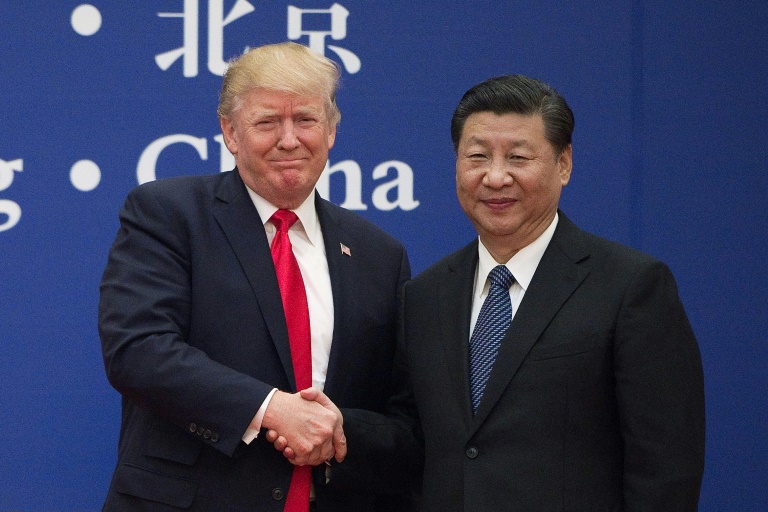
Why the U.S. and China Still Need Each Other » Capital News
In a world fraught with geopolitical tension, economic fragility, and global challenges ranging from climate change to artificial intelligence, few bilateral relationships carry as much weight—and consequence—as that between the United States and China. While strategic rivalry has dominated headlines in recent years, recent developments—including a phone call between Presidents Xi Jinping and Donald Trump and the Senior-Level Track Two Dialogue in Beijing—suggest a subtle but important shift. These moments are more than symbolic; they are reminders that this is a relationship too pivotal to be neglected.
President Xi likened the U.S.-China relationship to steering a massive ship—it requires strong leadership, clear vision, and the maturity to rise above short-term distractions. It’s a fitting metaphor. This relationship has endured storms, yet it has also steered the world through transformative moments.
Amid trade disputes and rising mistrust, it’s easy to overlook the legacy of collaboration. The normalization of ties in the 1970s reshaped the global order. China’s accession to the World Trade Organization in 2001, supported by U.S. policymakers, unlocked vast economic opportunities for both nations. These were not transactional deals—they were foundational decisions that lifted millions out of poverty and expanded global trade.
There have also been remarkable instances of cooperation on transnational challenges. During the Obama-Xi era, both nations led global efforts on climate change, counter-piracy operations, and public health—most notably during the Ebola outbreak. These efforts weren’t merely diplomatic niceties—they were examples of pragmatic, strategic alignment in the face of shared risks.
The recent Track Two Dialogue in Beijing offers a potential blueprint for resetting ties. Vice President Han Zheng’s remarks—underscoring that peaceful coexistence and mutual respect benefit not only China and the U.S. but the world—may seem idealistic in today’s cynical climate, but they reaffirm a consistent message from Beijing: the door to engagement remains open.
This is not a naïve stance. China’s position, as expressed by both Xi and Han, is guided by principle and pragmatism. Beijing insists on equality, mutual benefit, and the respect of core interests, such as Taiwan. This assertiveness is often mistaken for rigidity—but it is consistent with how any major power articulates its red lines. What matters is that China continues to extend invitations for dialogue, trade, and cultural exchange, as seen in Xi’s reception of American students and his invitation to Trump for a future visit.
The U.S. and China will not always see eye to eye. Nor should they. Their differing political systems, values, and strategic visions mean that tension is inevitable. But disagreement does not have to translate into enmity.
Both Xi and Trump reaffirmed their commitment to dialogue, referencing progress under the Geneva framework. Xi reiterated that cooperation is the only viable path, while Trump acknowledged the value of a strong Chinese economy and the mutual benefits of collaboration. In a volatile world, these statements are not mere rhetoric—they are strategic signals.
This relationship is not a zero-sum game. Its trajectory affects everything from global markets and climate action to AI governance and regional stability in Asia. When Washington and Beijing work together, the world breathes easier. When they don’t, smaller nations—especially in the Global South—are often caught in the crossfire, forced into binary choices that stifle their own growth and sovereignty.
Reviving U.S.-China cooperation could also rejuvenate multilateralism, which has suffered under the weight of nationalism and great-power rivalry. If these two giants, despite their differences, can craft a framework for managed competition and strategic respect, they could provide a model for a deeply divided international order.
We should meet the future with clear-eyed optimism. The willingness to engage remains on both sides. Constructive voices are still strong, even amid discord. Diplomacy demands precisely this: the ability to find common ground in complex terrain and to press forward despite setbacks.
The recent interactions between Xi and Trump, and the dialogues between Chinese and American delegates, are not hollow courtesies. They are structural signals—proof that while trust may be fragile, the channels of engagement endure. As China has repeatedly said, the door remains open.
Let it not be said that this generation of leaders chose confrontation over conversation. The U.S. and China may never be allies in the traditional sense—but for the sake of global peace, security, and shared progress, they must remain stable, reliable partners.